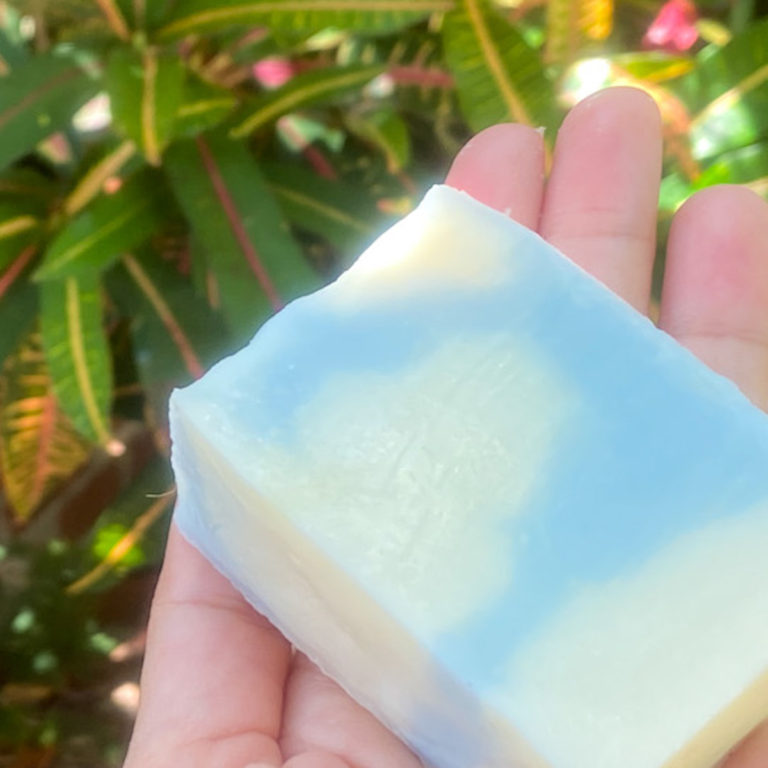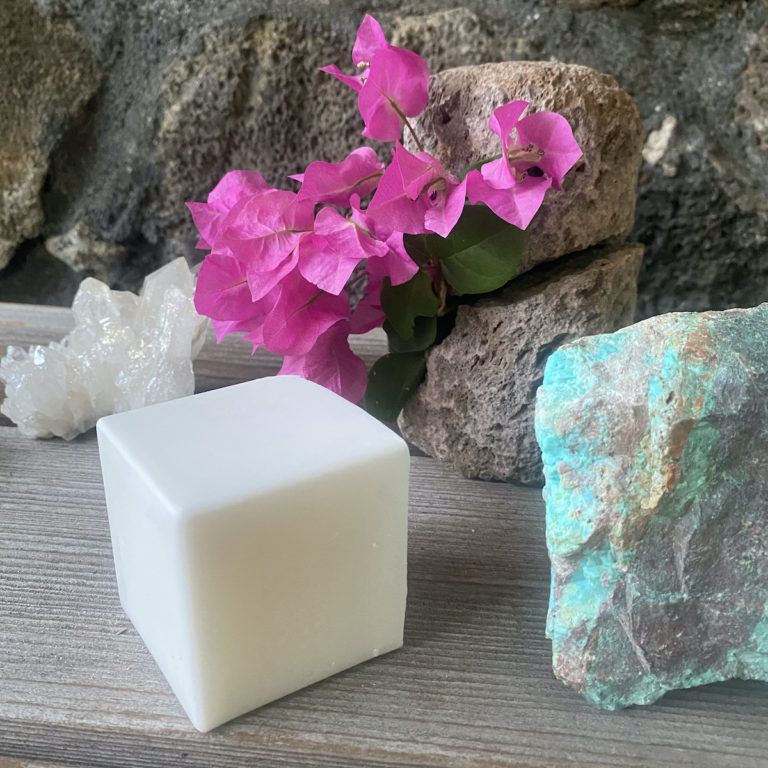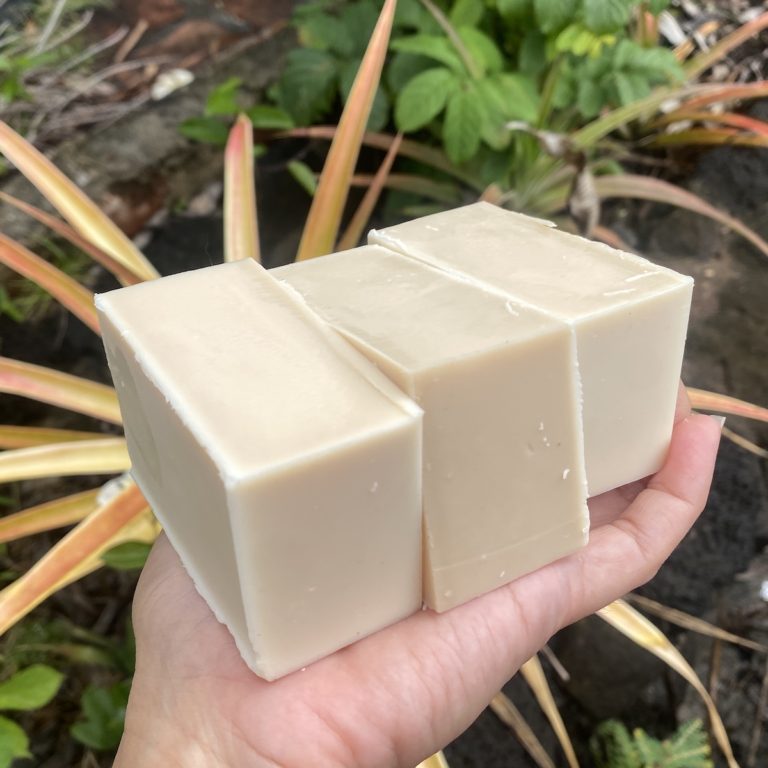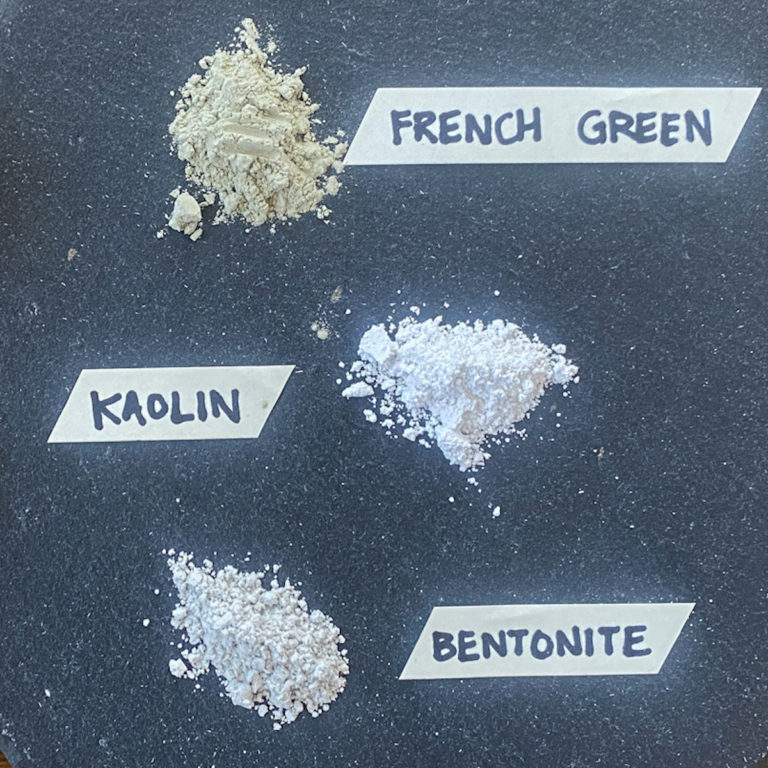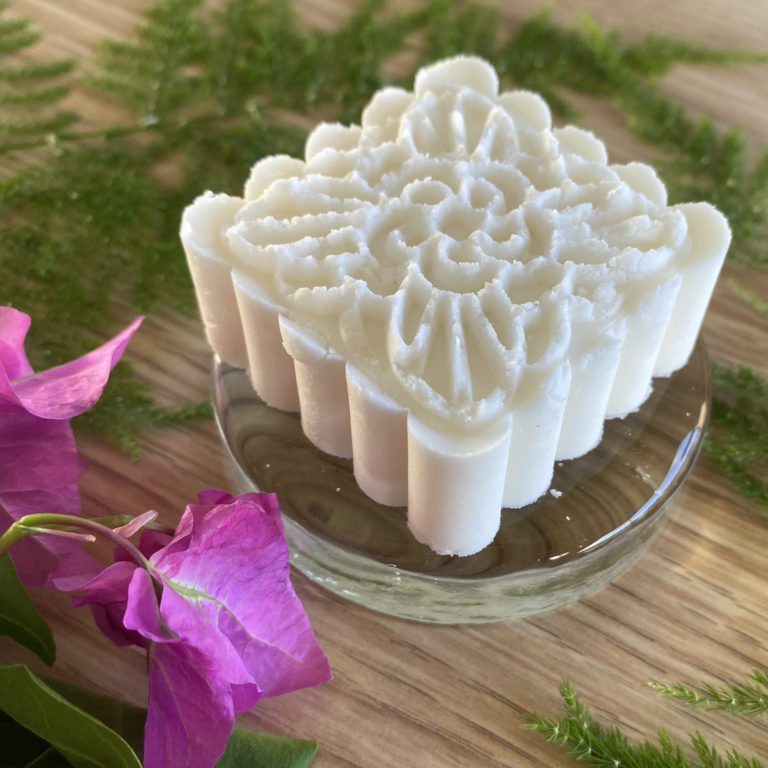17 Best Essential Oils to Use for Soap Making

Handmade soap is a fantastic choice for those looking for a natural, skin-friendly, cost-effective way to clean their skin. When you choose to make your soap, it puts you in control of what you add – or don’t add – to it. In addition to the bare minimum of lye solution and fats required to create soap, you can consider adding extra mix-ins and ingredients to offer added cleansing and nourishing benefits, such as essential oils.
For most people, the best essential oil to use for soap making is lavender. It offers a pleasant fragrance that blends well with others, is gentle on all skin types, and provides a relaxing feeling. Other essential oils you can use are orange, lemon, and frankincense.
As you continue reading, we’ll first share a bit of background information on essential oils. We will get into what the top considerations should be as you decide which essential oils to use in your soaps, and we’ll also discuss why lavender oil is the best choice for most people. Of course, we’ll also provide a list of many other excellent essential oils to use in your handcrafted soaps, along with the reasons why.
Understanding Essential Oils: A Basic Overview
Essential oils are 100% natural, derived by using extraction methods from herbs, flowers, and plants. Usually, steam distillation is how the oils are derived, including heating the plant parts until the gas is released. The gas is then condensed back down into a liquid, which is what the oil is.
Throughout the whole process, care is taken to ensure no breakdown of sensitive plant compounds. This means the aromas and therapeutic benefits of the essential oil are preserved, which is quite fascinating altogether.
It’s important to note that not every plant you’ll find in nature can produce essential oil, so the options can be limited if you’re only looking at essential oils for fragrance. Therefore, when some soapmakers are looking for a particular scent or a generally wider variety of options, they would rather turn to a synthetic fragrance oil to do the trick.
What To Consider When Selecting Essential Oils for Soap Making
There are three primary factors to consider as you select which essential oils to use in homemade soap. You will need to identify what you are looking to get out of the essential oil add-in in regards to:
- Therapeutic benefits
- Scent
- Standalone scents
- Blended oil combinations
- Cost
In case you’re not sure about something listed here, don’t worry – we’ll get into each of these factors in more detail below.
What Type of Therapeutic Benefits Are You Interested In?

Essential oils offer a nice fragrance, but even a less expensive, synthetic fragrance oil can do that. What’s so amazing about essential oils is that they go above and beyond a nice fragrance by offering many valuable therapeutic benefits.
If you’re looking for a power ingredient that’ll take your handmade soap to the next level, the addition of essential oil or two may be just what you’re looking for. Whether you’re looking for something to pop an extra punch of uplifting energy, some added skin nourishment, or even a magic ingredient to fight fungus, you can find it with the right essential oil or blend of oils.
Take a moment to jot down a few therapeutic benefits you may like for your soap to offer, and take to our list below or other fine resources to pinpoint which oil can help accomplish just that.
What Type of Fragrance Would You Like in Your Handmade Soap?
Each essential oils have their unique fragrance, and they can add quite a bit to your soap in that regard. Whether you’re looking for something fruity, floral, or fresh — added essential oils could bring that fragrance for you.
Single Essential Oil Aromas
While many essential oils have more than one dominant aroma, here are the most popular groupings of single essential oil fragrance categories to get you thinking:
- Camphoraceous (sometimes grouped with minty) – strong scents that are known for clearing the respiratory system, these oils can be described as stimulating, refreshing, and energizing.
- Citrus – light and fresh, these scents are tangy, refreshing, clean, and vibrant while enhancing cleaning power.
- Earthy (sometimes grouped with woody) – soft, grounding, musty, and often masculine scents that can be emotionally balancing.
- Floral – feminine, soft, powdery, and romantic aromas that can be comforting and balance mood.
- Herbaceous – grassy, refreshing, and spring-like aromas that are fresh, calming, and encouraging.
- Minty (sometimes grouped with camphoraceous) – fresh, uplifting, and energizing, these scents are poignant and sharp.
- Resinous – deep and rich, these oils are almost smoky and warm, promoting balance and inner calm.
- Spicy – warm, exotic, intense scents that can be crisp, penetrating, and lively.
- Woody (sometimes grouped with earthy) – deep and lingering, these scents are soft and warm, reminiscent of tree bark.
Blending Essential Oils
As you read the list above, did you find yourself thinking that one aroma family might smell nice when combined with another? Floral and citrus often go hand-in-hand together, for example.
Well, it’s good thinking; that blending essential oils can be a fun endeavor and depends on what your nose likes. However, best practices have indicated that each essential oil has “notes” that correlate with the overall feeling of their aroma.
These are the types of “notes” that each essential oil portrays, including top notes, middle notes, or base notes. When blending oils into a single product or use, a widely accepted practice is to aim for:
- 30% Top Notes
- 60% Middle Notes
- 10% Base Notes
We’ll include which note it contains for blending purposes for each of our top picks for essential oils in soap that we list below.
What’s Your Budget for Essential Oils for Soap Making?
Like it or not, some essential oils can cost you top dollar, while others are a dime a dozen. The quality of oil affects the price, so pay attention to if you’re buying pharmaceutical grade or not.
The process required to produce the oil can drive the cost up or down, depending on its complexity. Additionally, the rarity of the plant from which the oil is derived, the region where it’s grown, or the specificness of growing conditions for that plant can also affect the price of the oil.
From a $13 15 mL bottle of DoTerra Lemongrass Essential Oil to a $367 5 mL bottle of DoTerra Rose Oil, the price range can run the gamut. Be clear about what you want to spend before you fall in love with the idea of a certain oil.
For this article, we link to some recommended oils on Amazon so that you may check the price at your leisure. Costs certainly can change over time, but we do understand this is an important factor to consider.
Tips for Working With Any Essential Oils
When you’re working with essential oils for soap making, we have a few tips and best practices we’ve learned along the way. We’re confident that these best practices will help lead you to a pleasant soap making experience and excellent results.
- Read up on your oil – Read the description of your oil and learn more about it before purchasing or using it in soap. If you’re pregnant or have kidney problems, for example, you shouldn’t use juniper berry oil. If you’re making cold process soap, citrus oils’ aroma tends to fade quickly, so you should blend it with something additional. Know the ins and outs of what you intend to work with before you get started.
- Ensure you select high-quality essential oils – To get the best results in oil benefits and fragrance, make sure you are using oils that have been thoroughly tested and approved for use in soap. You do not want to mix poor-quality essential oils into your top-of-the-line homemade soap.
- Calculate your amounts – To get optimal results in both fragrance and therapeutic benefits, it’s important to use the correct amount of essential oils in your soap. The IFRA (International Fragrance Association) and RIFM (Research Institute for Fragrance Materials) put out safety guidelines that consider the maximum usage rates deemed safe for bath and beauty products. This helps prevent overdoing it and causing skin irritation. Note: Explore the Bramble Berry Fragrance Calculator to learn the recommendations.
- Understand what PPO is – PPO in a soap recipe stands for “per pound of oils.” Remember that one pound = 16 ounces = 454 grams. Recipes, calculators, and essential oil info will often refer to PPO. While recommended usage rates can vary, a good rule of thumb for wash-off soap is an essential oil usage rate of 3% or less. That is, 3% of the total soap oils in the recipe by weight are essential oils. In a one-pound batch of soap, 3% would be .48 ounces total.
- Store your essential oil soap smartly – It’s a good idea for any soap to store it in a cool, dry place out of sunlight, and this is especially true for soaps with essential oils. This type of proper storage helps preserve the fragrance and the benefits of the oils.
Our Top Picks of Essential Oils to Use for Soap Making
With the top factors to consider fresh in your mind, let’s get into our top picks for essential oils in soap, based on the benefits they bring to the table:
- Best Overall Essential Oil: Lavender
- Best Essential Oil to Blend with Other Oils: Orange
- Best Essential Oil for Added Cleansing Power: Lemon
- Best Essential Oil for Skin Benefits: Frankincense
- Best Antifungal Essential Oil: Tea Tree (Melaleuca)
- Best Cooling Essential Oil: Peppermint
- Best Calming Essential Oil: Patchouli
- Best Uplifting Essential Oil: Bergamot
- Best Essential Oil By Scent Category
- Camphoraceous Essential Oil: Eucalyptus
- Citrus Essential Oil: Lemongrass
- Earthy Essential Oil: Vetiver
- Floral Essential Oil: Petitgrain
- Herbaceous Essential Oil: Clary Sage
- Minty Essential Oil: Spearmint
- Resinous Essential Oil: Myrrh
- Spicy Essential Oil: Cinnamon Leaf
- Woody Essential Oil: Cedarwood
Best Overall: Lavender Essential Oil
As one of the most well-known, universally liked scents, lavender is a go-to for many soapmakers. It’s gentle on the skin almost across the board, blends well with many other oils, and has a physically and emotionally balancing and calming effect.
Yet, there is a downside you should be aware of.
Before soap batter is fully saponified, it’s a very highly alkaline environment. Some components of EOs can be sensitive to this.
Lavender has constituents that change in alkaline environments. It’s scent also tends to fade quicker from soaps than many other EOs.
Highlights
- Relaxing
- Remedies irritated skin
- It has been used to clean cuts and soothe bruises for years.
- Eliminates bacteria
- Relieves tired muscles
Oil Usage Specifications
| Maximum % in Recipe | 3% |
| Maximum Amount in Weight PPO | 0.48 oz / 13.6g |
| Scent Category | Floral |
| Note (for blending) | Middle |
Best To Blend With Other Oils: Orange Essential Oil
With a cheery and mellow top note scent in the citrus aroma family, and the orange essential oil is one that can partner up with another oil almost for a divine smell almost unfailingly.
Highlights
- It brings added cleansing power.
- Repels insects
- Lifts spirits to reduce depression symptoms
- Treats inflammation
- Antiseptic
Oil Usage Specifications
| Maximum % in Recipe | 3% |
| Maximum Amount in Weight PPO | 0.48 oz / 13.6g |
| Scent Category | Citrus |
| Note (for blending) | Top |
Best for Added Cleansing Power: Lemon Essential Oil
Trusty lemon is known to kill harmful viruses and bacteria, and it even has properties that fight fungus. Therefore, it’s a smart addition when you’re looking for some added cleansing properties.
Highlights
- Reduces anxiety and depression symptoms
- Can reduce pain
- Lets you breathe easier
- Antifungal
- Loaded with vitamin C, antioxidants, and antimicrobial properties that promote the healing of wounds
Oil Usage Specifications
| Maximum % in Recipe | 3% |
| Maximum Amount in Weight PPO | 0.48 oz / 13.6g |
| Scent Category | Citrus |
| Note (for blending) | Top |
Best for Skin Benefits: Frankincense Essential Oil
While we’re still waiting for science to catch up and back these claims, people swear by frankincense essential oil to moisturize the skin and fight wrinkles and breakouts.
Highlights
- Known as the king of essential oils
- Improves asthma
- Promotes a strong immune system
- Creates a sense of peace
Oil Usage Specifications
| Maximum % in Recipe | 3% |
| Maximum Amount in Weight PPO | 0.48 oz / 13.6g |
| Scent Category | Resinous |
| Note (for blending) | Base |
Best Antifungal: Tea Tree Essential Oil
Many users of tea tree oil report its antifungal and antibacterial properties. This can help keep skin oil at bay and fight fungal problems.
Highlights
- Soothes itchy skin
- Helps dry or inflamed skin
- Helps heal wounds
Oil Usage Specifications
| Maximum % in Recipe | 3% |
| Maximum Amount in Weight PPO | 0.48 oz / 13.6g |
| Scent Category | Camphoraceous |
| Note (for blending) | Top |
Best Cooling: Peppermint Essential Oil
As one of the most recognizable scents, peppermint oil brings an undeniably refreshing cooling feeling with it. It’s refreshing and yet soothing.
Highlights
- Soothes irritated skin
- Eases anxiety
- Has a very long history both in cosmetic use and medicinal purposes
Oil Usage Specifications
| Maximum % in Recipe | 2% |
| Maximum Amount in Weight PPO | 0.32 oz / 9g |
| Scent Category | Minty |
| Note (for blending) | Top |
Best Calming: Patchouli Essential Oil
Patchouli is one of those aromas you either love or don’t care for; it’s unmistakable. In addition to being revered for its ability to promote calmness, it’s believed that in many circles the patchouli brings abundance and prosperity to the ones who use it.
Highlights
- It has been trusted for centuries to heal skin conditions such as eczema, dermatitis, and dandruff.
- Warm, deep, spicy smell that also blends well
- Boosts the immune system
- Restores mental and physical balance
- It is fixative, meaning it keeps other oils from evaporating too much (and therefore losing their scent.)
Oil Usage Specifications
| Maximum % in Recipe | 3% |
| Maximum Amount in Weight PPO | 0.48 oz / 13.6g |
| Scent Category | Earthy |
| Note (for blending) | Base |
Best Uplifting: Bergamot Essential Oil
Bergamot is a fantastic blend of light citrus and floral notes that is sure to lift spirits. Known to elevate mood and alleviate stress, it also has some antiseptic and pain-relieving qualities.
Highlights
- Decongestant to nasal passages
- Antibacterial on the skin
- Fights chronic fatigue
- Alleviates headaches
Oil Usage Specifications
| Maximum % in Recipe | 3% |
| Maximum Amount in Weight PPO | 0.48 oz / 13.6g |
| Scent Category | Citrus |
| Note (for blending) | Top |
Best in the Camphoraceous Scent Family: Eucalyptus Essential Oil
Eucalyptus is one of the most well-known and well-liked camphoraceous scents there is. It’s refreshing, cool, and fresh.
Highlights
- Clean scent
- Cooling
- Has antiseptic properties
- Offers anti-inflammatory benefits
- Deodorant
Oil Usage Specifications
| Maximum % in Recipe | 3% |
| Maximum Amount in Weight PPO | 0.48 oz / 13.6g |
| Scent Category | Camphoraceous |
| Note (for blending) | Top |
Best in the Citrus Scent Family: Lemongrass Essential Oil
We’re a fan of lemongrass essential oil from the citrus aroma family because it doesn’t irritate the skin as much as other citruses. It also doesn’t evaporate as quickly as others. For this reason, your soap holds that fresh, citrus scent a little longer than if you’d chosen another citrus oil.
Highlights
- Lifts spirits
- Relieves stress, anxiety, and depression
- Has antibacterial properties that are effective with a variety of drug-resistant bacteria
Oil Usage Specifications
| Maximum % in Recipe | 3% |
| Maximum Amount in Weight PPO | 0.48 oz / 13.6g |
| Scent Category | Citrus |
| Note (for blending) | Top |
Best in the Earthy Scent Family: Vetiver Essential Oil
The oil from the vetiver plant is a deep and earthy aroma. Not only does it smell exceptional, but it has some added health benefits.
Highlights
- Relieves the stress of emotional trauma or shock
- Repels insects and lice
- Soothes nervousness and insomnia
- It is believed to help joint and muscle pain.
Oil Usage Specifications
| Maximum % in Recipe | 3% |
| Maximum Amount in Weight PPO | 0.48 oz / 13.6g |
| Scent Category | Earthy |
| Note (for blending) | Base |
Best in the Floral Scent Family: Petitgrain Essential Oil
The unique aroma of this beloved essential oil is derived from the bark of the bitter orange tree. The floral scent has a slightly edgy bitter and woody tone to it, making it unique and lovely to smell.
Highlights
- Reduces stress
- Calms muscle spasms
- Anti-inflammatory
- Antiseptic
Oil Usage Specifications
| Maximum % in Recipe | 3% |
| Maximum Amount in Weight PPO | 0.48 oz / 13.6g |
| Scent Category | Floral |
| Note (for blending) | Middle |
Best in the Herbaceous Scent Family: Clary Sage Essential Oil
Clary sage is versatile and smells great. It acts as a natural antidepressant, alleviating feelings related to stress and creating an overall sense of wellbeing.
Highlights
- Has natural antibacterial properties
- Used to be a popular ingredient in a well-known eye treatment
- Relaxing, soothing, and balancing
Oil Usage Specifications
| Maximum % in Recipe | 2% |
| Maximum Amount in Weight PPO | 0.32oz / 9.08g |
| Scent Category | Herbaceous |
| Note (for blending) | Middle (to top) |
Best in the Minty Scent Family: Spearmint Essential Oil
Spearmint is a friendly sibling to peppermint, boasting a slightly sweeter flavor and fresh mint scent without all the menthol in peppermint.
Highlights
- High in antioxidants
- Aids with hormone imbalances
- Mixes well with other oils to form a blend
Oil Usage Specifications
| Maximum % in Recipe | 3% |
| Maximum Amount in Weight PPO | 0.48 oz / 13.6g |
| Scent Category | Minty |
| Note (for blending) | Top |
Best in the Resinous Scent Family: Myrrh Essential Oil
Whether you’ve read the Bible lately or not, you should know that myrrh dates back to the biblical era. For many years, people have savored the sweet, resinous smell of myrrh.
Highlights
- It has been used in traditional Chinese medicines.
- Scientists continue to test this oil’s potential uses, etc.
- Early evidence in animal research suggests that myrrh can directly kill bacteria.
Oil Usage Specifications
| Maximum % in Recipe | 3% |
| Maximum Amount in Weight PPO | 0.48 oz / 13.6g |
| Scent Category | Resinous |
| Note (for blending) | Base |
Best in the Spicy Scent Family: Cinnamon Leaf Essential Oil
If cinnamon isn’t the king of spicy scents, we don’t know what is! The festive, cozy smell fills your senses and also brings antiseptic, antimicrobial, antioxidant, and anesthetic healing benefits.
Highlights
- Boosts the immune system
- Reduces inflammation
- Gives you energy
- Promotes improved brain function
Oil Usage Specifications
| Maximum % in Recipe | 1% |
| Maximum Amount in Weight PPO | .12 oz / 3.4 g |
| Scent Category | Spicy |
| Note (for blending) | Base |
Best in the Woody Scent Family: Cedarwood Essential Oil
The warm and woodsy aroma of cedarwood blends like a dream with gentle florals, spices, and other wood oils.
Highlights
- Can cleanse and tighten hair follicles when used in your hair
- Protects against bacteria
- Deodorizes
Oil Usage Specifications
| Maximum % in Recipe | 3% |
| Maximum Amount in Weight PPO | 0.48 oz / 13.6g |
| Scent Category | Woody |
| Note (for blending) | Base |
Making DIY Essential Oil Soap
And now… are you ready to make some soap or what? We’re sharing one great recipe from Kyndra Holley that leaves a placeholder for YOU to pick which oil or blend of oils to add!
As she says in her article, “Adding essential oils to the soap will not only provide amazing aromas but will also give you all the therapeutic benefits that essential oils have to offer. You can mix and match [essential oils in this recipe] as you please.”
Gather the following tools:
Gather the following ingredients:
- 4 bars unscented castile soap
- 1/2 – 1 cup water
- 1/3 cup oats
- 1 teaspoon vitamin E oil (get it here)
- 30 drops essential oil (I use this brand)
- dried herbs (rosemary or lavender), optional
Follow these steps:
- Grate the bars of soap.
- Next, pulse the oats to a coarse grind in the blender.
- In a double boiler, over medium-low heat, add the grated soap and the water (starting with 1/2 cup). Slowly melt the soap and mix as you melt. Add more water if needed. Aim for having the soap melt, but don’t add so much water that it won’t harden again.
- Once the soap is melted, remove from heat and let cool slightly. Here comes the fun part… essential oils!
- Add the oats, vitamin E, essential oils, and herbs, if using. Mix well. Select the oils you’d like to use (since you now know so much about them after reading this article!) They should total approximately what’s indicated for these particular oils, so read up and use the calculator.
- Before the soap sets, pour the mixture into the soap molds. See our other article about the best silicone molds here.
- Store the soap in an airtight container.
- The soap needs to set/cure undisturbed for at least one week before use.
Conclusion
With many essential oils available to you, we hope this has helped provide insight into which ones are right for you to add to your homemade soap.
Here’s a rundown of what was covered in this article:
- Understanding essential oils
- What to consider when selecting essential oils
- Tips for working with any essential oil
- Our top 18 picks of essential oils for soap making
- Making your own DIY essential oil soap recipe.
Whether you’re looking for added moisture, purifying properties, or a fragrance that knocks your socks off, there’s definitely an essential oil or blend for you. Good look on your next soap making adventure – don’t forget to drop us a line and let us know how it goes.

